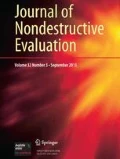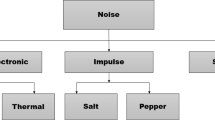Abstract
In recent years, X-ray screening systems have been used to safeguard environments in which access control is of paramount importance. Security checkpoints have been placed at the entrances to many public places to detect prohibited items such as handguns and explosives. Human operators complete these tasks because automated recognition in baggage inspection is far from perfect. Research and development on X-ray testing is, however, ongoing into new approaches that can be used to aid human operators. This paper attempts to make a contribution to the field of object recognition by proposing a new approach called Adaptive Sparse Representation (XASR+). It consists of two stages: learning and testing. In the learning stage, for each object of training dataset, several patches are extracted from its X-ray images in order to construct representative dictionaries. A stop-list is used to remove very common words of the dictionaries. In the testing stage, test patches of the test image are extracted, and for each test patch a dictionary is built concatenating the ‘best’ representative dictionary of each object. Using this adapted dictionary, each test patch is classified following the Sparse Representation Classification methodology. Finally, the test image is classified by patch voting. Thus, our approach is able to deal with less constrained conditions including some contrast variability, pose, intra-class variability, size of the image and focal distance. We tested the effectiveness of our method for the detection of four different objects. In our experiments, the recognition rate was more than 97 % in each class, and more than 94 % if the object is occluded less than 15 %. Results show that XASR+ deals well with unconstrained conditions, outperforming various representative methods in the literature.







Similar content being viewed by others
Notes
A similar approach was developed by us for a biometric problem [11].
References
Blalock, G., Kadiyali, V., Simon, D.H.: The impact of post-9/11 airport security measures on the demand for air travel. J. Law Econ. 50(4), 731–755 (2007)
Bolfing, A., Halbherr, T., Schwaninger, A.: How image based factors and human factors contribute to threat detection performance in X-ray aviation security screening. In: Holzinger, A. (ed.) HCI and Usability for Education and Work. Lecture Notes in Computer Science, vol. 5298, pp. 419–438. Springer, Berlin (2008)
Csurka, G., Dance, C., Fan, L., Willamowski, J., Bray, C.: Visual categorization with bags of keypoints. In: European Conference on Computer Vision (ECCV 2004), pp. 327–334 (2004)
Flitton, G., Breckon, T.P., Megherbi, N.: A comparison of 3D interest point descriptors with application to airport baggage object detection in complex CT imagery. Pattern Recognit. 46(9), 2420–2436 (2013)
Flitton, G., Mouton, A., Breckon, T.P.: Object classification in 3D baggage security computed tomography imagery using visual codebooks. Pattern Recognit. 48(8), 2489–2499 (2015)
Franzel, T., Schmidt, U., Roth, S.: Object Detection in Multi-view X-ray Images. Pattern Recognition. Springer, Berlin (2012)
Lowe, D.: Distinctive image features from scale-invariant keypoints. Int. J. Comput. Vis. 60(2), 91–110 (2004)
Megherbi, N., Han, J., Breckon, T.P., Flitton, G.T.: A comparison of classification approaches for threat detection in CT based baggage screening. In: 2012 19th IEEE International Conference on Image Processing (ICIP), pp. 3109–3112. IEEE, New York (2012)
Mery, D.: Computer Vision for X-ray Testing. Springer, Berlin (2015)
Mery, D.: Inspection of complex objects using multiple-X-ray views. IEEE/ASME Trans. Mechatron. 20(1), 338–347 (2015)
Mery, D., Bowyer, K.: Automatic facial attribute analysis via adaptive sparse representation of random patches. Pattern Recognit. Lett. 68, 260–269 (2015)
Mery, D., Riffo, V., Zscherpel, U., Mondragón, G., Lillo, I., Zuccar, I., Lobel, H., Carrasco, M.: GDXray: the database of X-ray images for nondestructive testing. J. Nondestruct. Eval. 34(4), 1–12 (2015)
Mery, D., Svec, E., Arias, M.: Object recognition in baggage inspection using adaptive sparse representations of X-ray images. In: Proceedings of the Pacific Rim Symposium on Image and Video Technology (PSIVT 2015) (2015)
Michel, S., Koller, S., de Ruiter, J., Moerland, R., Hogervorst, M., Schwaninger, A.: Computer-based training increases efficiency in X-ray image interpretation by aviation security screeners. In: 2007 41st Annual IEEE International Carnahan Conference on Security Technology, pp. 201–206 (2007)
Moosmann, F., Triggs, B., Jurie, F.: Fast discriminative visual codebooks using randomized clustering forests. In: Twentieth Annual Conference on Neural Information Processing Systems (NIPS’06), pp. 985–992. MIT Press, Cambridge (2007)
Mouton, A., Breckon, T.P.: Materials-based 3D segmentation of unknown objects from dual-energy computed tomography imagery in baggage security screening. Pattern Recognit. 48(6), 1961–1978 (2015)
Mouton, A., Flitton, G.T., Bizot, S.: An evaluation of image denoising techniques applied to CT baggage screening imagery. In: IEEE International Conference on Industrial Technology (ICIT 2013). IEEE, New York (2013)
Ojala, T., Pietikäinen, M., Mäenpää, T.: Multiresolution gray-scale and rotation invariant texture classification with local binary patterns. IEEE Trans. Pattern Anal. Mach. Intell. 24(7), 971–987 (2002)
Parliament, E.: Aviation security with a special focus on security scanners. In: European Parliament Resolution (2010/2154(INI)), pp. 1–10 (2012)
Riffo, V., Mery, D.: Active X-ray testing of complex objects. Insight Non-Destruct. Test. Cond. Monit. 54(1), 28–35 (2012)
Riffo, V., Mery, D.: Automated detection of threat objects using adapted implicit shape model. IEEE Trans. Syst. Man Cybern. Syst. 46(4), 472–482 (2016)
Schwaninger, A., Bolfing, A., Halbherr, T., Helman, S., Belyavin, A., Hay, L.: The impact of image based factors and training on threat detection performance in X-ray screening. In: Proceedings of the 3rd International Conference on Research in Air Transportation, ICRAT 2008, pp. 317–324 (2008)
Sivic, J., Zisserman, A.: Efficient visual search of videos cast as text retrieval. IEEE Trans. Pattern Anal. Mach. Intell. 31(4), 591–606 (2009)
Tosic, I., Frossard, P.: Dictionary learning. IEEE Signal Process. Mag. 28(2), 27–38 (2011)
Turcsany, D., Mouton, A., Breckon, T.P.: Improving feature-based object recognition for X-ray baggage security screening using primed visualwords. In: IEEE International Conference on Industrial Technology (ICIT 2013), pp. 1140–1145 (2013)
Uroukov, I., Speller, R.: A preliminary approach to intelligent X-ray imaging for baggage inspection at airports. Signal Process. Res. 4, 1 (2015)
Wright, J., Yang, A.Y., Ganesh, A., Sastry, S.S., Ma, Y.: Robust face recognition via sparse representation. IEEE Trans. Pattern Anal. Mach. Intell. 31(2), 210–227 (2009)
Zentai, G.: X-ray imaging for homeland security. In: IEEE International Workshop on Imaging Systems and Techniques (IST 2008), pp. 1–6 (2008)
Zhang, N., Zhu, J.: A study of X-ray machine image local semantic features extraction model based on bag-of-words for airport security. Int. J. Smart Sens. Intell. Syst. 8(1), 45–64 (2015)
Acknowledgments
This work was supported by Fondecyt Grant No. 1130934 from CONICYT, Chile.
Author information
Authors and Affiliations
Corresponding author
Rights and permissions
About this article
Cite this article
Mery, D., Svec, E. & Arias, M. Object Recognition in X-ray Testing Using Adaptive Sparse Representations. J Nondestruct Eval 35, 45 (2016). https://doi.org/10.1007/s10921-016-0362-8
Received:
Accepted:
Published:
DOI: https://doi.org/10.1007/s10921-016-0362-8




